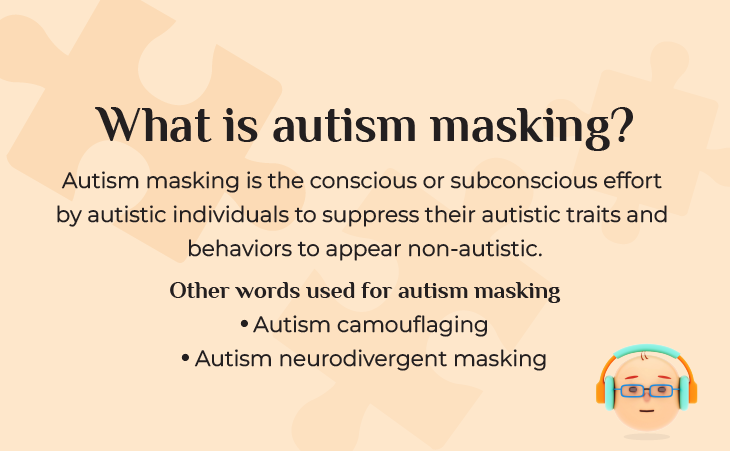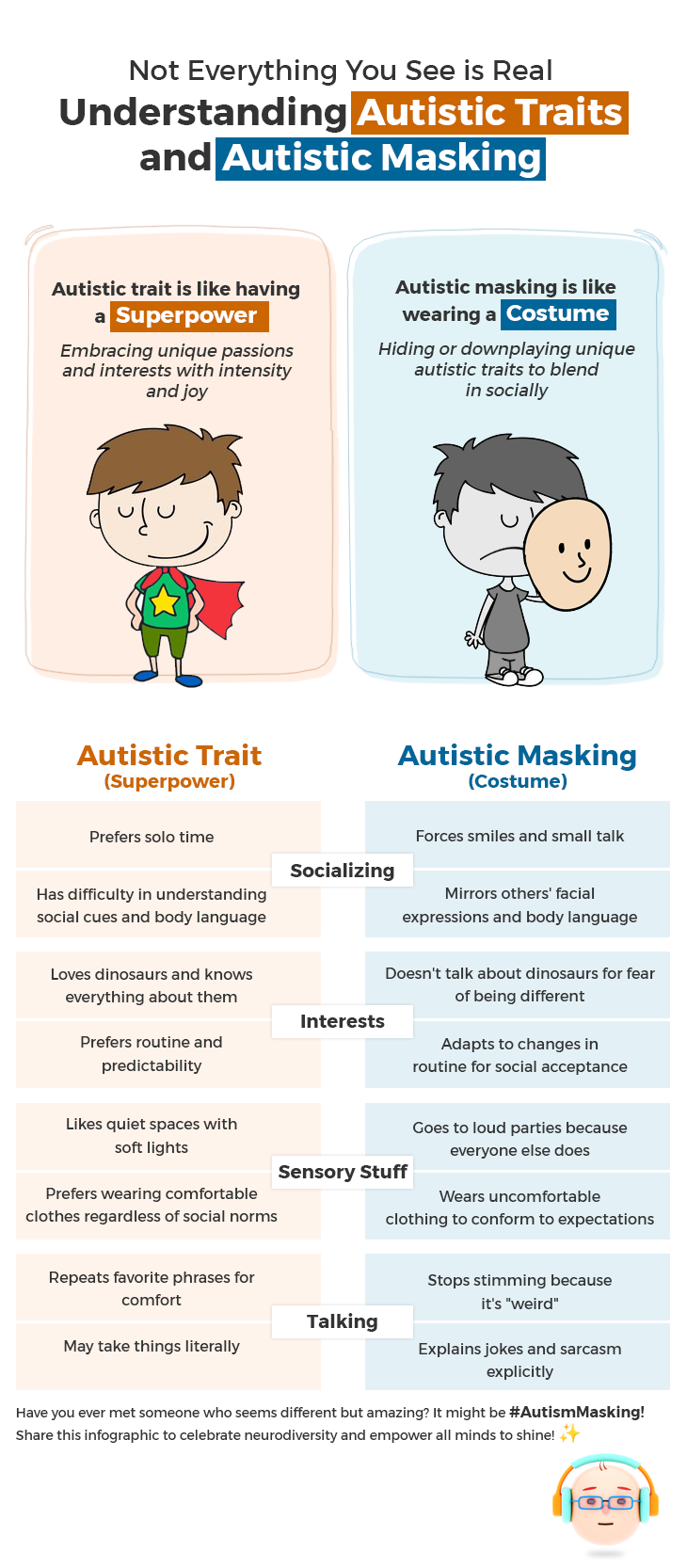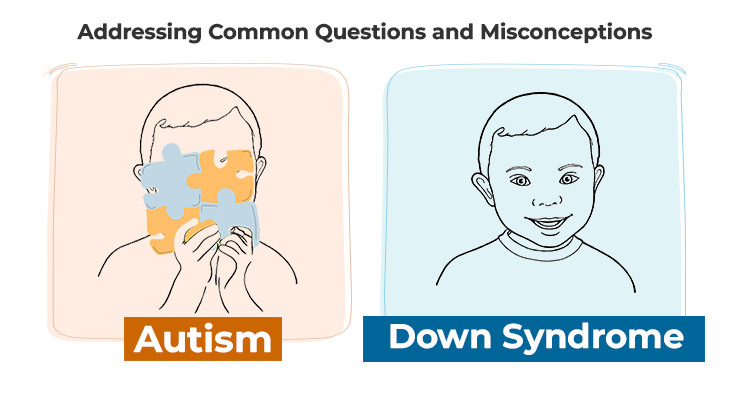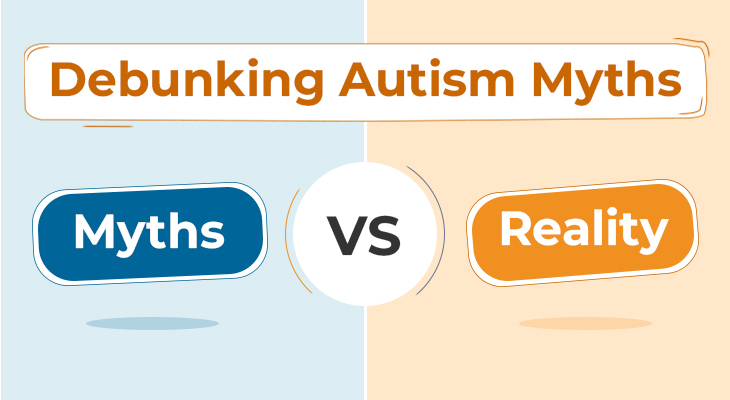What is autism masking?
Autism masking, also called autism camouflaging or autism neurodivergent masking, describes the conscious or subconscious effort by autistic people to suppress their autistic traits and behaviors to appear neurotypical i.e. non-autistic.
Autism masking is a coping mechanism used by individuals with autism to hide their autism symptoms to either fit into or better navigate social situations.
Table of Contents
- What is autism masking?
- What does autism masking look like?
- Why do autistic people mask?
- Is autistic masking good?
- What age does autistic masking start?
- Can you tell if someone is masking?
- What are the strategies for coping with social situations without masking
- Conclusion
- Did You Know About Folate Receptor Autoantibodies (FRAAs) and Brain Development?
- References
What does autism masking look like?
Imagine you’re playing dress-up. You put on a costume, maybe a superhero cape or a pirate hat, to fit in with the game. That is kind of what “masking” is in autism. Some autistic people act differently in social situations than they do naturally, like wearing a “social costume” to fit in.
But underneath that costume are their autistic traits, their unique way of thinking and experiencing the world. It’s like their superpowers! This table shows some differences between these “superpowers” and the “costume” some people choose to wear:
| Autistic Trait (Superpower) | Autistic Masking (Costume) | |
|---|---|---|
| Socializing | Prefers solo time | Forces smiles and small talk |
| Has difficulty in understanding social cues and body language | Mirrors others’ facial expressions and body language | |
| Interests | Loves dinosaurs and knows everything about them | Doesn’t talk about dinosaurs for fear of being different |
| Prefers routine and predictability | Adapts to changes in routine for social acceptance | |
| Sensory Stuff | Likes quiet spaces with soft lights | Goes to loud parties because everyone else does |
| Prefers wearing comfortable clothes regardless of social norms | Wears uncomfortable clothing to conform to expectations | |
| Talking | Repeats favorite phrases for comfort | Stops stimming because it’s “weird” |
| May take things literally | Explains jokes and sarcasm explicitly |
Remember, not every autistic individual wears a costume all the time, and the costume can look different for each person. The most important thing is to be kind and understanding of everyone, no matter what “costume” they wear!
Why do autistic people mask?
Imagine living in a world where your natural way of interacting, processing information, and experiencing joy makes you stand out. Imagine the subtle (and sometimes not-so-subtle) cues that tell you you’re “different,” that your unique perspective isn’t always welcome. This, unfortunately, is the reality for many autistic individuals who engage in masking, a complex phenomenon where they adapt their behavior to conform to social expectations.
The core driver behind masking lies in the universal human desire for belonging and acceptance. We are innately wired to connect with others, and rejection stings deeply. Autistic individuals, unfortunately, often face social rejection due to their neurodivergent traits. Stimming behaviors, sensory sensitivities, and even blunt honesty can be misconstrued as “weird” or “inappropriate” by neurotypical individuals, leading to ostracism and bullying. To navigate this challenging social landscape, many autistic individuals choose to mask their natural behaviors.
Understanding why autistic people mask is crucial for building a more inclusive and accepting world. By recognizing the inherent desire for connection and the challenges faced due to neurodivergence, we can create spaces where autistic individuals feel safe to express themselves authentically, without fear of rejection or judgment.
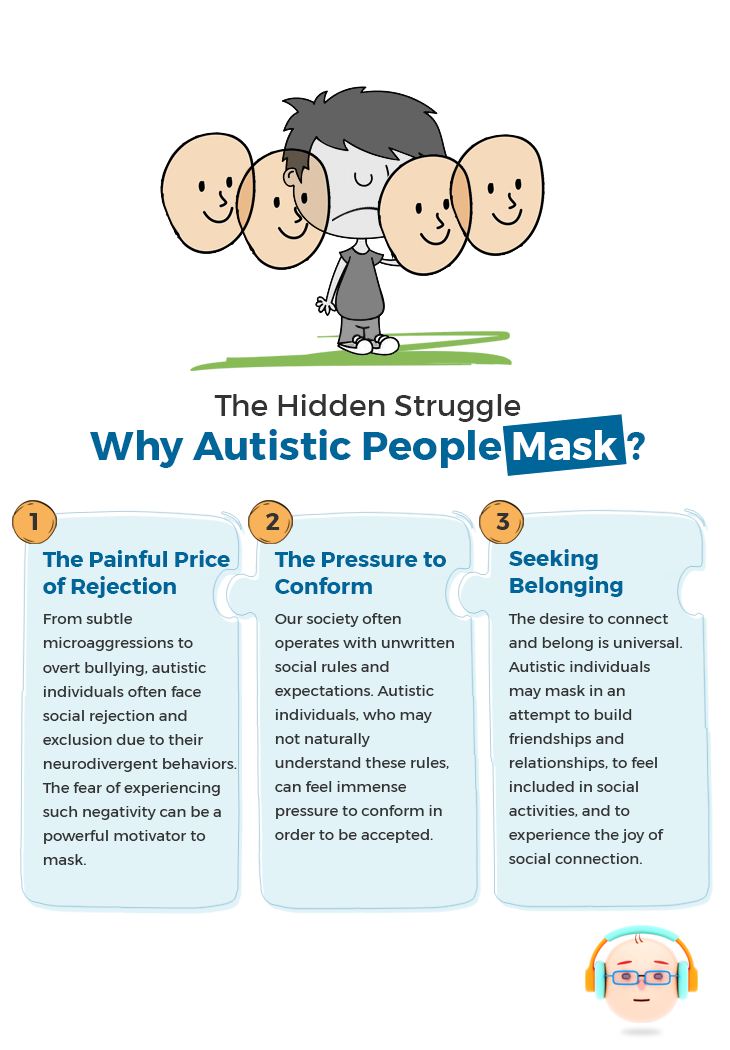
Download Download & share this infograph in your network [Free Download]
Is autistic masking good?
It’s crucial to remember that masking is not a choice but a coping mechanism. While masking can offer some short-term relief from social anxieties, it comes at a significant cost.
-
Mental Health Impact: Masking can be mentally and emotionally draining, leading to anxiety, depression, and burnout. Suppressing one’s authentic self for extended periods can take a toll on self-esteem and well-being.
- On Stress & Anxiety: The 2019 study on Understanding the Reasons, Contexts and Costs of Camouflaging for Autistic Adults[1] revealed higher stress and anxiety in people who masked autistic traits frequently compared to those who masked less often.
- On Depression: In 2018, research (Experiences of Autism Acceptance and Mental Health in Autistic Adults)[2] revealed that autistic adults who masked their traits more often were more likely to experience depression and feel socially ostracized.
- Exhaustion: A 2016 NIH study[3] found that autistic women who masked their traits to conform to neurotypical expectations reported feeling exhausted by the constant effort.
- Loss of Identity: Masking can create a disconnect between an individual’s true self and the persona they present to the world. This can lead to feelings of inauthenticity and confusion about one’s identity.
- Limited Potential: Masking can prevent autistic individuals from fully expressing their unique strengths and talents. By hiding their true selves, they may miss opportunities to connect with others who share their interests and perspectives.
- Perpetuating Stereotypes: Masking reinforces the idea that there is only one “right” way to be social, further marginalizing autistic individuals and their unique experiences.

Download Download & share this infograph in your network [Free Download]
At what age does autistic masking start?
Pinpointing a specific age for when autistic individuals start masking isn’t possible due to the complex and individual nature of this behavior. Here’s why:
- Little Kids (2-5 years): They might act differently to avoid trouble, but it’s hard to tell if it’s intentional masking or just normal development.
- School Age (5-12 years): As autistic kids face more social pressure, they might adjust how they talk, act, and even what they like to fit in. This could be influenced by bad experiences like bullying.
- Teens and Adults: As life gets more complex, masking can continue and even get stronger.
But remember, every person with autism is unique and it’s not just the age, but the following factors also matter:
- Self-Awareness: Some people realize they’re autistic later in life and then start masking.
- Social Environment: Kids may mask less in accepting spaces but more in stressful ones.
- Individual Differences: Just like everyone else, some people naturally mask more than others.
Can you tell if someone is masking?
While it’s tempting to seek clear-cut signs of masking, it’s important to understand that identifying someone as masking based solely on behavior is unreliable and potentially harmful. Here’s why:
- Autism is a spectrum: Every autistic individual experiences the world differently, and masking behaviors can vary greatly among them. Labeling someone based on limited observations can be inaccurate and disrespectful.
- Masking is complex: It’s often motivated by a desire to avoid negative experiences or fit in, rather than simply hiding autistic traits. Attributing specific behaviors solely to masking can be misleading.
- Context matters: Many behaviors could have explanations unrelated to autism. Judging someone based on isolated observations within specific contexts can be unfair and inaccurate.
What are the strategies for coping with social situations without masking
Here are some tips to navigate social situations authentically, without autistic masking
-
Before You Go
- Know yourself: Understand your sensitivities, interests, and communication style.
- Pick your battles: Not every event is for you, choose people and places that you feel comfortable with.
- Plan ahead: Research events, identify challenges, and plan coping strategies (breaks, sensory aids, etc.).
-
During Interactions
- Be direct: Be upfront: Tell people your needs politely (“Can we get some dimmer lighting?”)
- Find your tribe: Connect with other autistic individuals for support and understanding.
- Show your strengths: Share your passions and engage in topics you enjoy.
- Calm your mind: Deep breaths, mindfulness, whatever helps you feel okay.
Conclusion
Masking can be both helpful and challenging and hence it’s important to acknowledge both its benefits and potential drawbacks. Remember:
- Masking is not a choice but a coping mechanism. It’s a way for autistic individuals to navigate a world that is often challenging and unwelcoming.
- Acceptance and understanding are key. Fostering inclusive environments where autistic individuals feel safe and accepted for who they are can reduce the need for masking and empower them to thrive.
- Celebrating neurodiversity is essential. We should recognize and appreciate the unique strengths and perspectives that autistic individuals bring to the world.

